Dinh Hoa Safety Zone
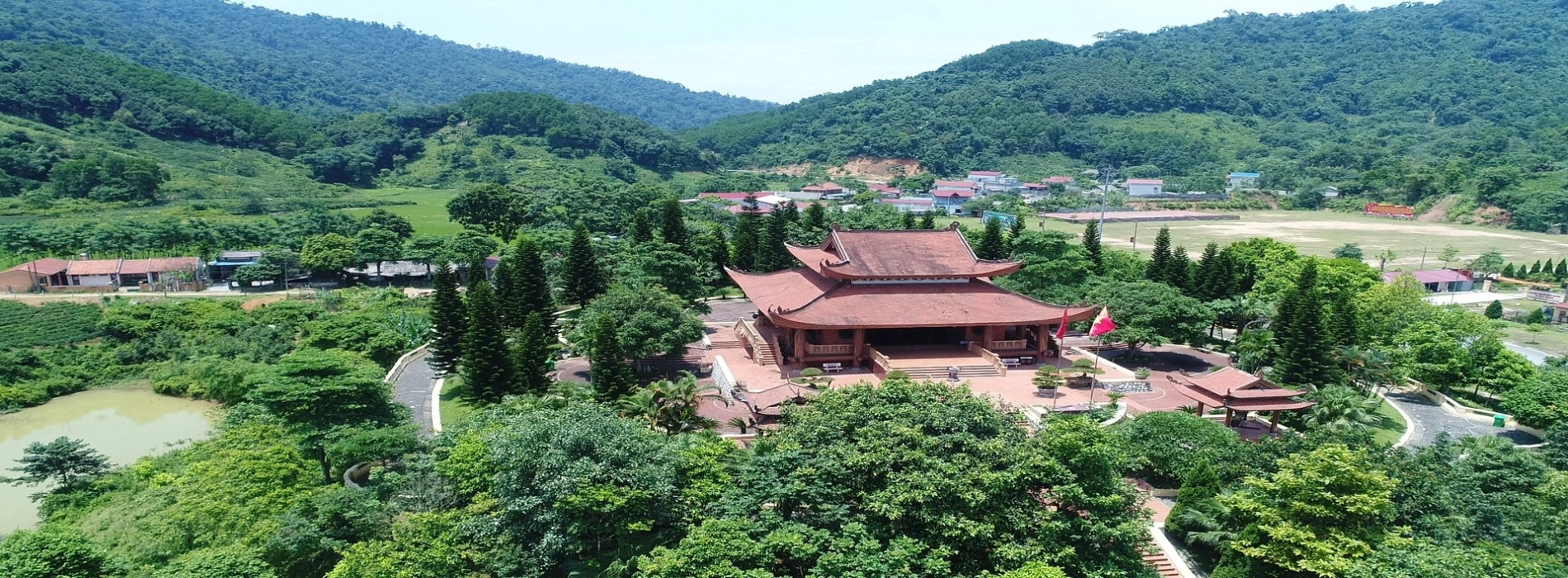
Dinh Hoa Safety Zone is a special national historical relic of Vietnam. President Ho Chi Minh and other Vietnamese Party and State leaders lived and worked here from 1947 to 1954 to lead the resistance war against French colonialism. You may often see the name “ATK Dinh Hoa” since it stands for “An Toan Khu” (Safety Zone) in Vietnamese.
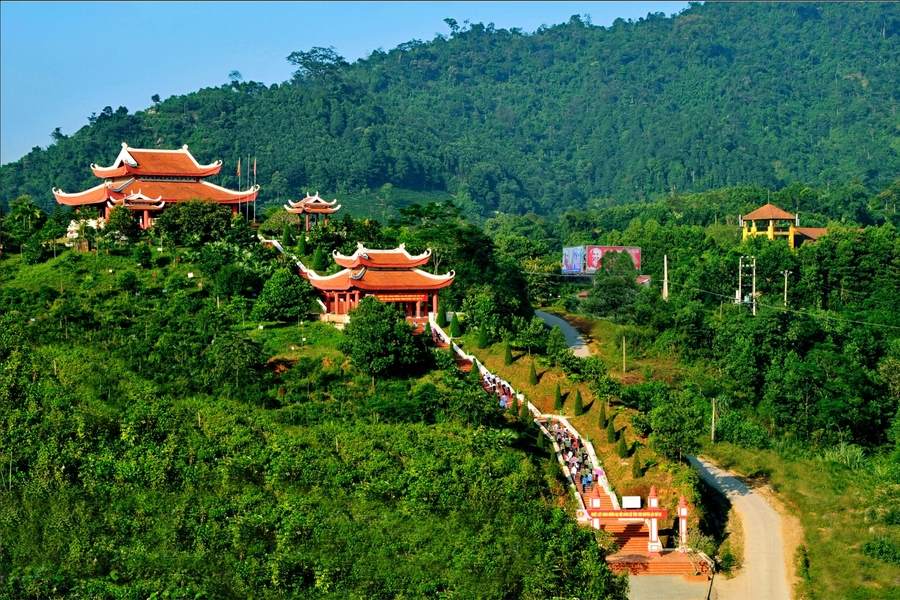
The path to a historical site in Dinh Hoa Safety Zone
Dinh Hoa Safety Zone sat at the center of Viet Bac Revolutionary Base with a strategic terrain, known as "advance to attack, retreat to defend." Surrounded by mountains and forests, it formed a natural defense system.
Over 5000 square meters, Dinh Hoa Safety Zone stretches across nine communes in Thai Nguyen Province. The entire complex currently houses over 128 relics, with 20 government-ranked sites. Join Asia King Travel in exploring notable points of the safety zone through the following article.
Dinh Hoa Safety Zone historical relic complex lies in Dinh Hoa District, Thai Nguyen Province. It also borders Thai Nguyen, Tuyen Quang, and Bac Kan provinces. The relic complex is over 60 kilometers from Thai Nguyen City Center and 130 kilometers from Hanoi. Despite being in a province bordering the capital, the distance is not short at all.
Suggested for you: Vietnam Veteran Tours
Driving is the most convenient way from Hanoi. The journey takes about 2.5 to 3 hours. It is even shorter if you start directly from Noi Bai International Airport.
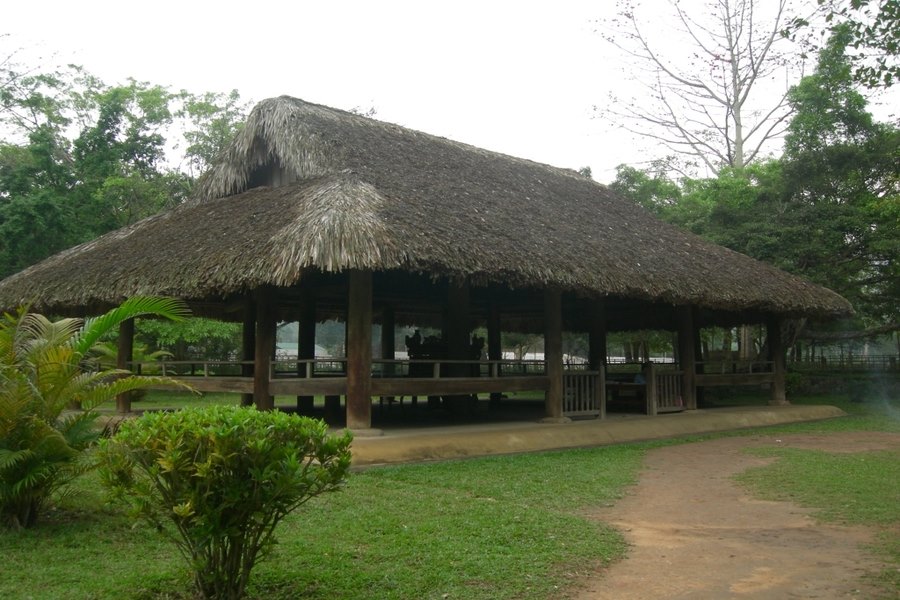
Tan Trao Relics is also a revolutionary base in the First Indochina War
From Noi Bai, go straight along Expressway 5 (Noi Bai - Lao Cai Expressway) until you reach an intersection near Kim Long, Vinh Phuc Province. Afterward, turn onto National Highway 2C and follow it to another Viet Bac historical site, Tan Trao Relics. Turn right from Tan Trao then drive for more 5 kilometers you will arrive at Dinh Hoa Safety Zone.
There's no better time to visit Dinh Hoa Safety Zone than April-May and August-September. These two periods are associated with important historical events in the Vietnamese people's resistance war against the French. They are Dien Bien Phu Victory (May 7, 1954) and August Revolution - Vietnam's National Day (August 19 - September 2, 1945).
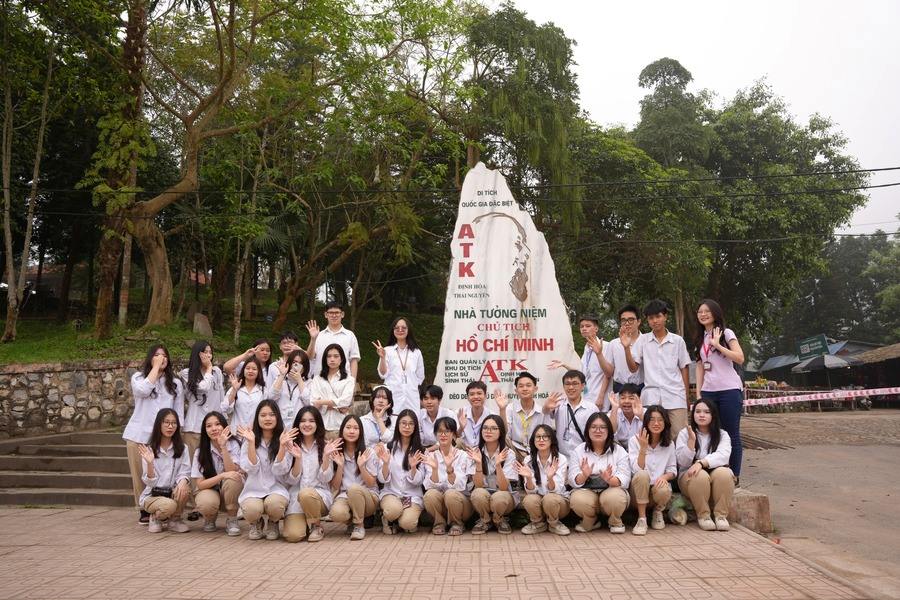
Many schools organize field trips to ATK Dinh Hoa for students on holidays. Source: Huynh Thuc Khang Hanoi High School
Dinh Hoa is connected by a trail network extending throughout the Viet Bac Revolutionary Base, enabling efficient supply lines and swift transmission of directives. Additionally, the location provides easy access to Cao Bang and Lang Son, leading to the border and fostering international communication.
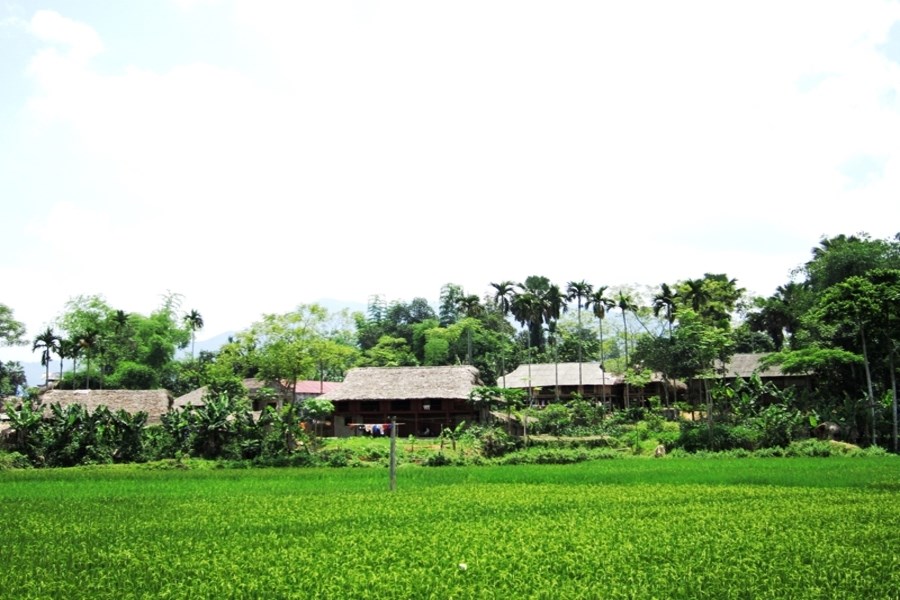
Tay ethinc people houses in Dinh Hoa
Most importantly, local ethnic communities made Dinh Hoa Safety Zone an ideal headquarters. They willingly gave the best accommodations to liberation forces; wholeheartedly supported and protected the resistance.
Ho Chi Minh Memorial House on Mount Hong is always the first stop for every visitor. It was inaugurated to celebrate the 115th anniversary of his birth. The memorial complex was built to imitate communal houses in the Red River Delta. An exhibition about President Ho Chi Minh and an incense altar inside.
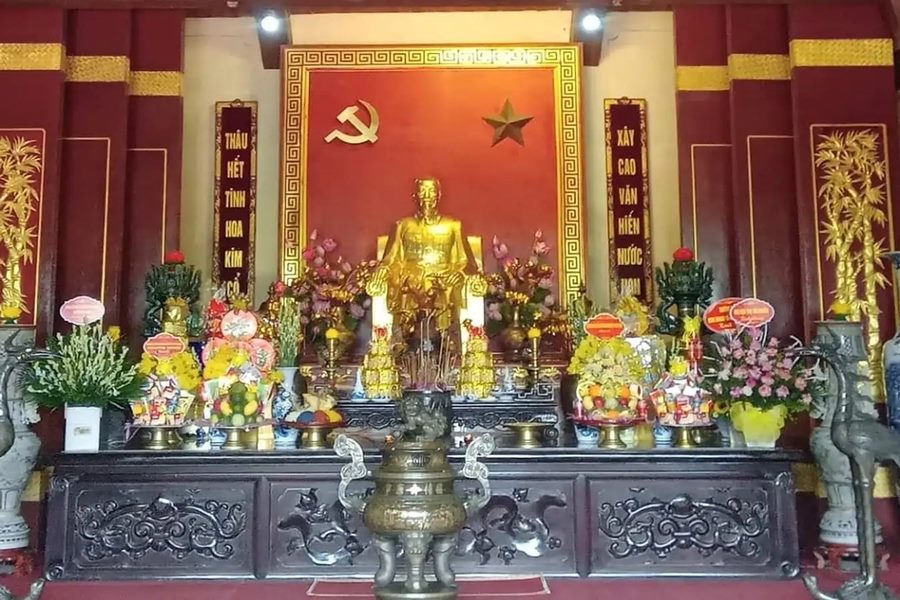
President Ho Chi Minh's altar inside the memorial house
Cho Chu Prison was constructed by the French in 1916 and expanded in 1942. It once held Vietnamese revolutionaries. The foundations of two parallel buildings remain the outer housed cells, while the inner served as a dining hall. Additionally, the base of a guardhouse and a watchtower can still be seen.
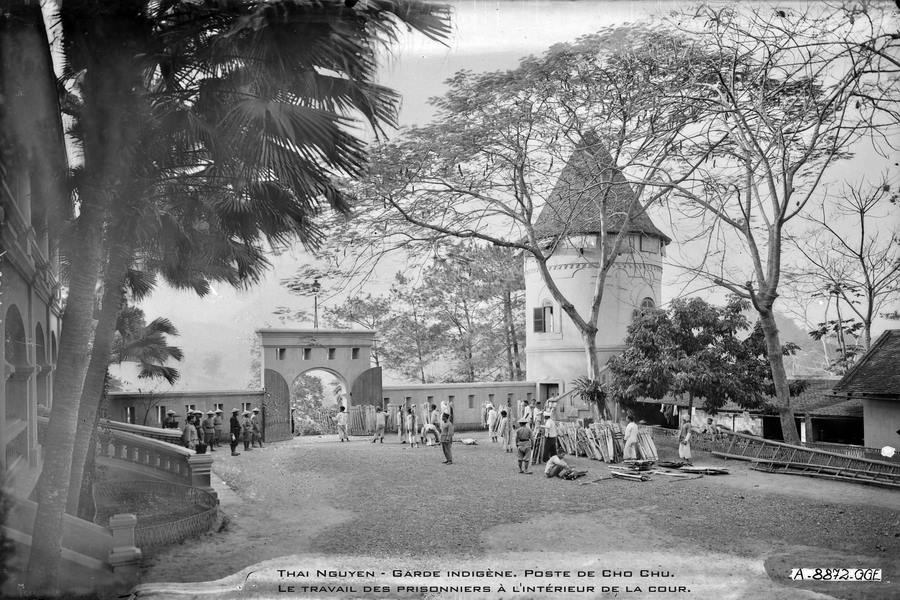
Old Image of Cho Chu in the past, now in ruins. Source: manhhai @Flickr
The prison stands as a symbol of the revolutionary soldiers dedicating their lives and fighting for the independence and freedom of Vietnam. Within Cho Chu Prison, many soldiers exemplified the spirit of learning and growth through unwavering struggle, making significant contributions to the cause of national liberation.
At Tin Keo Hill, President Ho Chi Minh made crucial decisions leading to the Winter-Spring Campaign victory (1953-1954). Today, his dwelling and other structures have been reconstructed using wood and palm-thatched roofs.
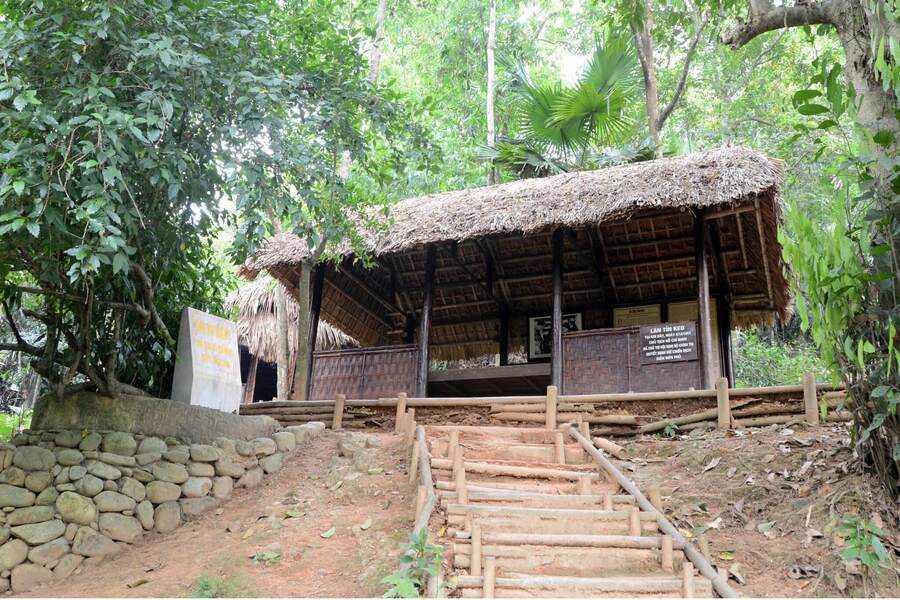
Tin Keo Hut, where President Ho Chi Minh made historic decisions
A museum housing over 400 artifacts depicting the revolutionary life of President Ho Chi Minh and other leaders has been built near Tin Keo Hill. Visiting this museum gives visitors a deeper understanding of Vietnamese history.
The historical relic Khuon Tat nestles beside a row of old shade trees along Khuon Tat Stream. President Ho Chi Minh lived here from 1947 to 1954. Khuon Tat Stream and banyan trees bear witness to his daily activities. Today, the waterfall maintains the natural beauty and clean environment.
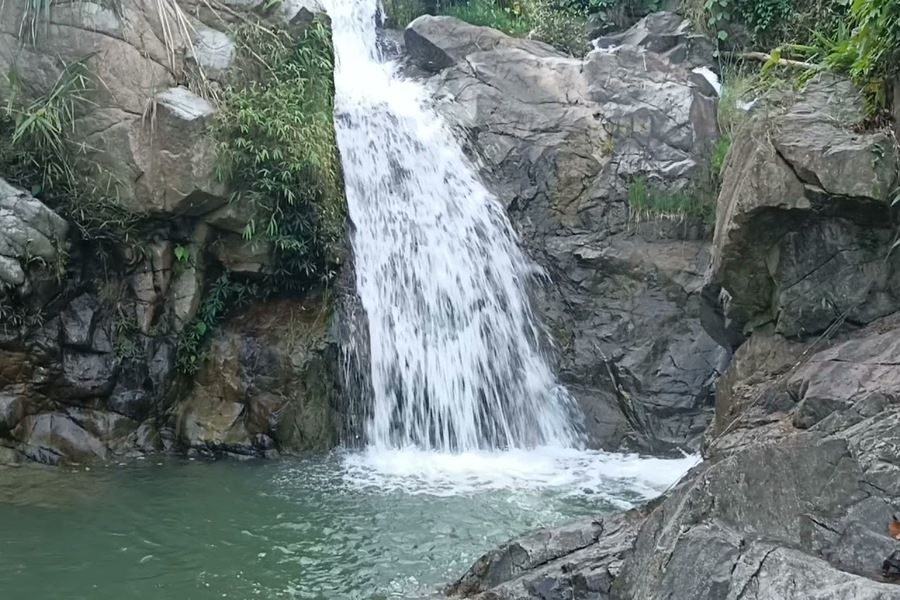
President Ho Chi Minh used to fish, do laundry, and exercise with soldiers at Khuon Tat Waterfall
The walking distance between the sites is considerable, so sneakers would be the most suitable footwear choice. Additionally, don't forget to bring a jacket, a hat for sun protection, and plenty of water to stay hydrated.
Visitors can support the local community by purchasing handicrafts and local products sold along the way to the historical sites. These items are quite affordable, perfect souvenirs for relatives. However, please report any unusual pricing to the site management.
During major Vietnamese holidays, add Dinh Hoa Safety Zone as a destination for your journey. Each location, each relic, gives you a sense of the historical values of a generation had sacrificed themselves to win freedom for the country. Contact us now to plan a history trip!